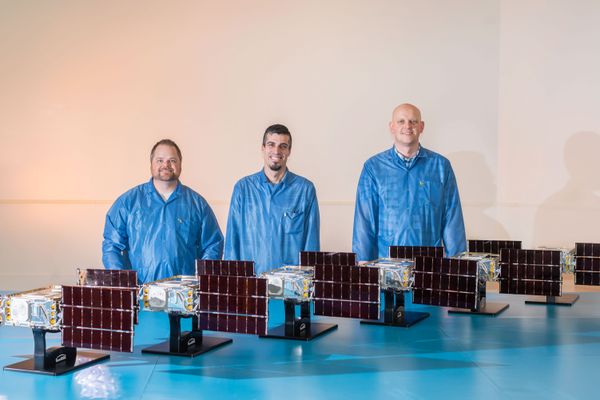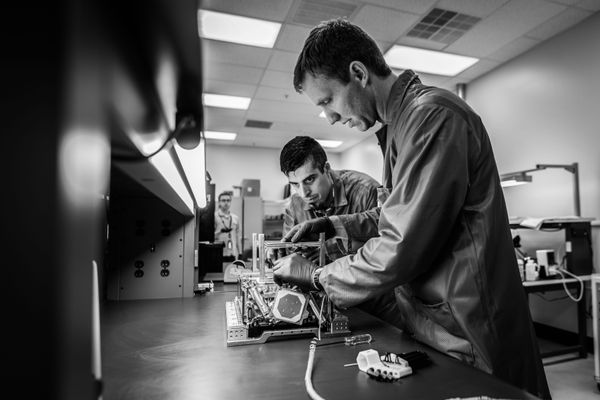Mission Facts
Objective: Study solar activity and understand solar particle storms
Launch: Summer 2026
Type: Spacecraft
Our Contributions
SDL provided the following mission activities:
- Six 6U CubeSat design, development, fabrication, and assembly
- Flight system assembly, integration, and test
- Power, command and data handling, communications, thermal management, attitude control, and propulsion subsystem development, integration, and test

Observing & Imaging the Sun with SunRISE
NASA’s SunRISE is an array of six suitcase-size CubeSats that have broad implications for life on Earth and beyond. Using integrated global navigation satellite system (GNSS) and decametric-hectometric (DH) wavelength (0.1−23 MHz) radio receivers, the mission array will work together to observe and image radio emissions associated with coronal mass ejections (CMEs) from the Sun.
Scientists will use this data to better understand the complex physics of CMEs and solar flares. CMEs and solar flares influence solar storms that feed into Earth’s complex space weather system, which, like terrestrial weather, can affect earthbound systems like power grids or radio communications. Solar storms can also affect space systems, damaging Earth-orbiting satellites and endangering astronauts. Scientists will use SunRISE data to gather insights into solar physics and space weather to better understand and prepare for these solar storms.

